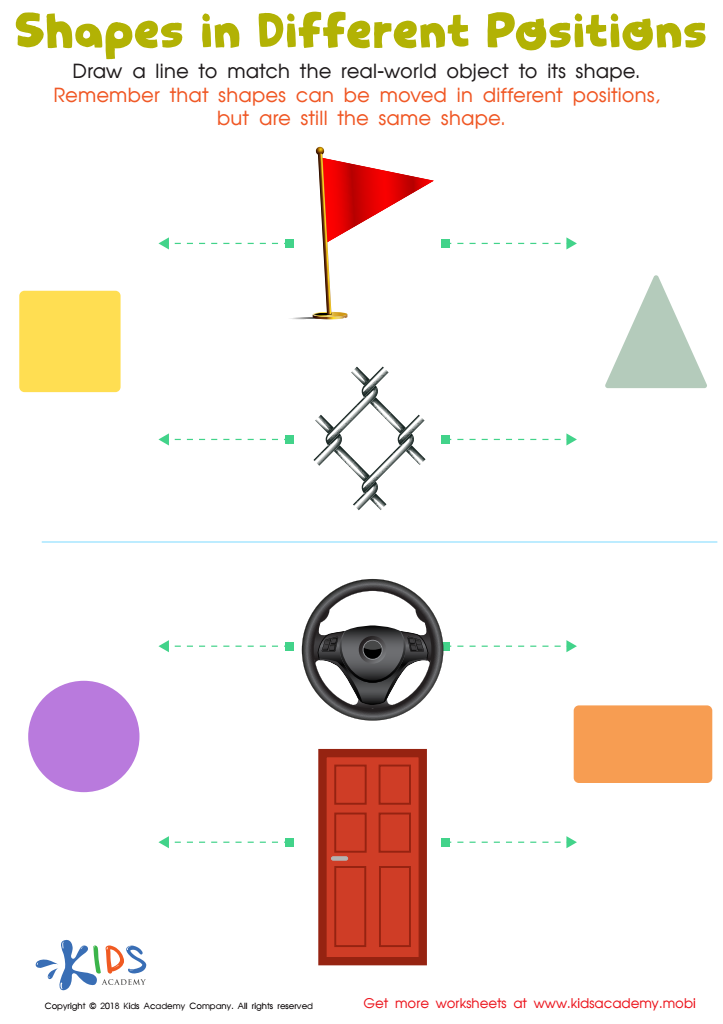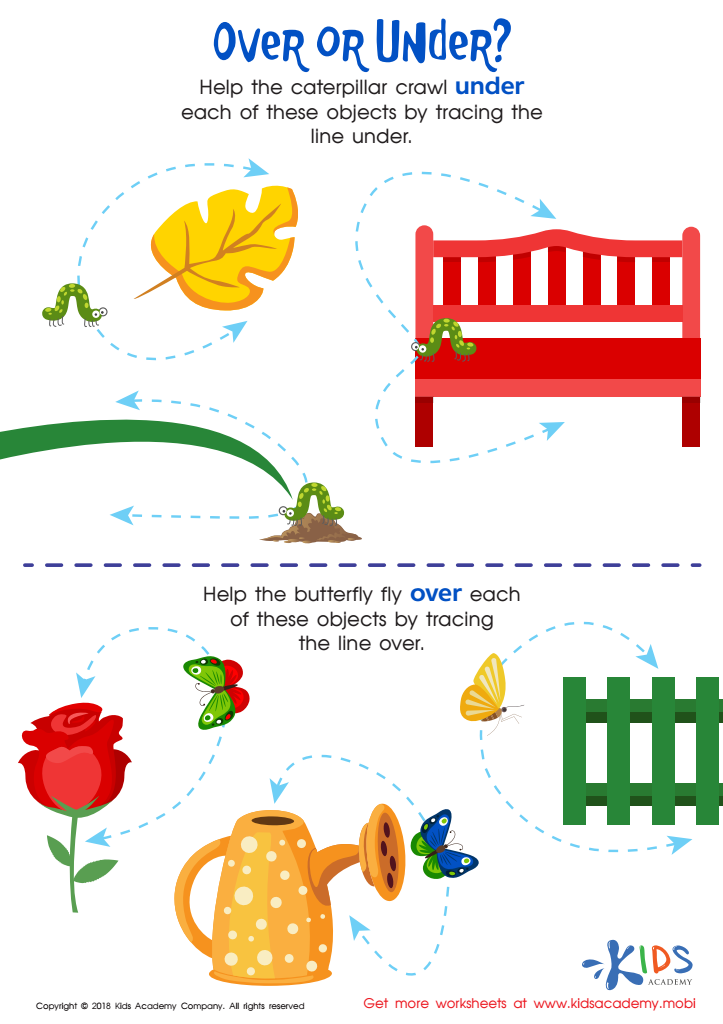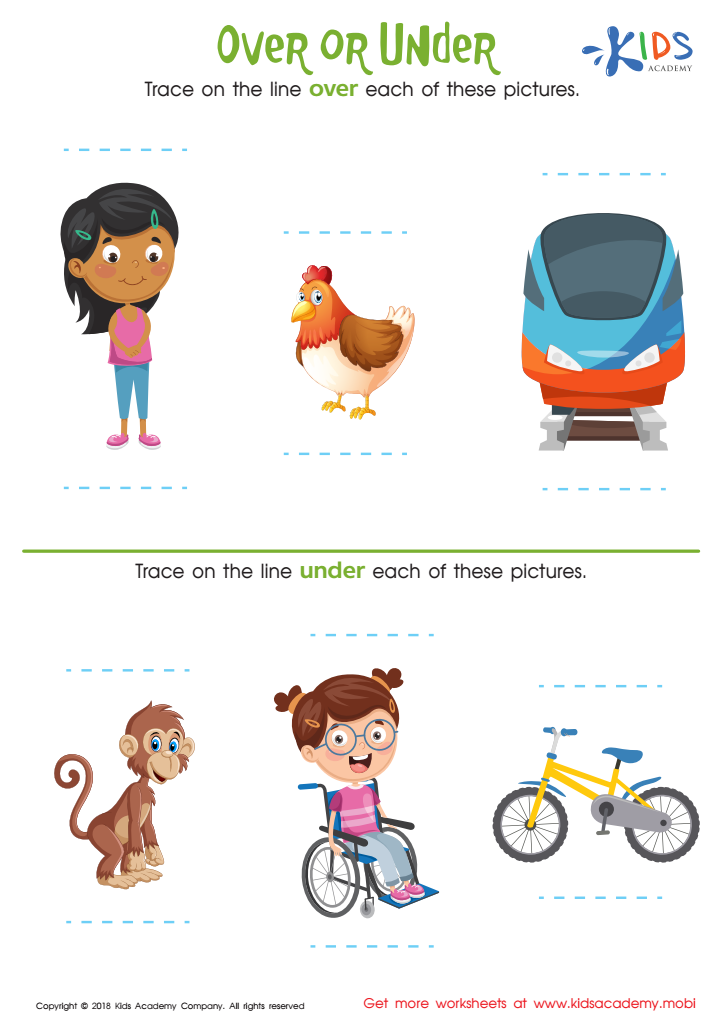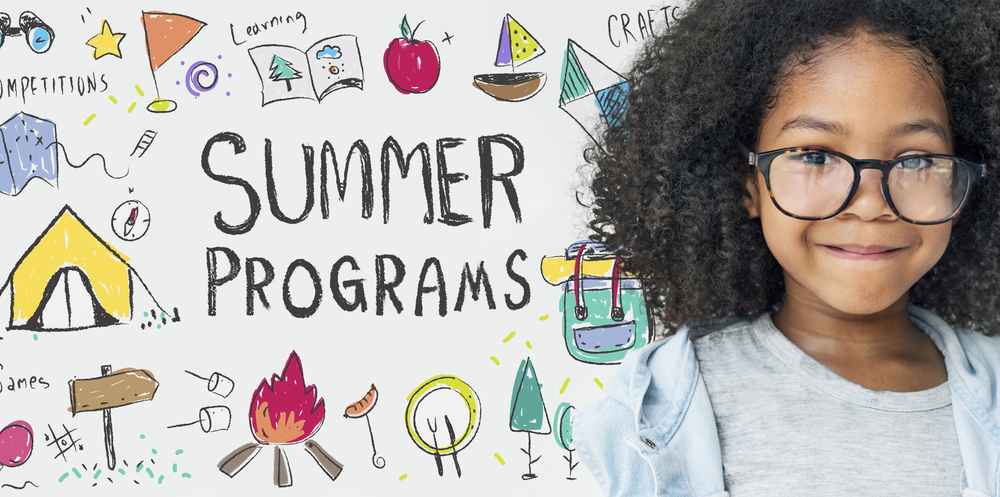Understanding prepositions Math Worksheets for Ages 4-6
4 filtered results
-
From - To
Enhance your child’s math skills with our "Understanding Prepositions" worksheets, specially designed for ages 4-6. These fun and engaging resources introduce young learners to essential preposition concepts in a playful context. Through colorful illustrations and interactive activities, children will explore positioning words like ‘above,’ ‘below,’ ‘next to,’ and more. Each worksheet encourages critical thinking while reinforcing foundational math skills. Perfect for homeschooling or classroom use, these worksheets aim to foster basic comprehension in a joyful learning environment. Watch your little ones thrive as they master prepositions through creativity and exploration! Access our printable worksheets to start their educational journey today.


Shapes in Different Positions Worksheet


Over or Under? Worksheet


Over or Under Worksheet


In Front or Behind Worksheet
Understanding prepositions plays a crucial role in early childhood education, especially for children aged 4 to 6. This stage is foundational for cognitive development, and prepositions help children learn spatial relationships, an essential concept in both language and math. By mastering prepositions like "above," "below," "between," and "beside," children can better understand geometry and the spatial aspects of mathematics.
Furthermore, integrating language skills with math learning enhances overall literacy and comprehension. Prepositions serve as building blocks for following directions, describing shapes, and visualizing patterns, skills that are vital in mathematics. When parents and teachers emphasize preposition understanding, they not only support mathematical skills but also foster critical thinking and problem-solving abilities.
Also, prepositions bolster social interaction and communication, allowing children to articulate their thoughts more clearly and confidently. This increased communication can lead to better collaboration in group activities and enhance classroom dynamics.
Lastly, early math skills often correlate with future academic success. By prioritizing prepositions, parents and teachers ensure that children have the linguistic tools necessary to engage with mathematical concepts effectively, setting a solid foundation for lifelong learning. Thus, understanding prepositions is essential for holistic developmental growth in young learners.
 Assign to My Students
Assign to My Students




















